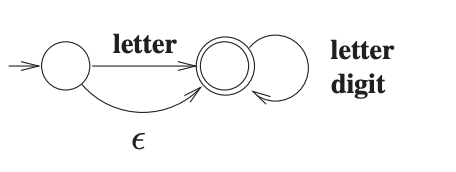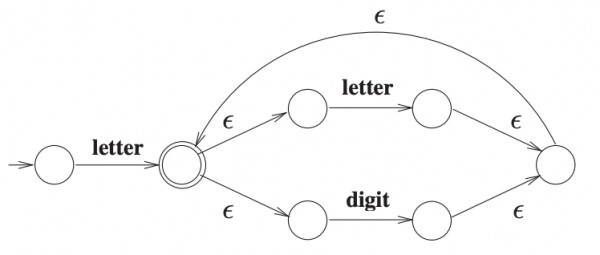The regular expression is given as $\text{letter(letter+digit)*}$.
This regular expression accepts the strings of one occurrence of a letter followed by any occurrence of letter and digits, such as $\text{(letter,letter.letter,letter.digit,letter.digit.digit..$\infty$)}$
Option (A) This is wrong because it also accepts empty string that is $\epsilon$.

Option (B):

This is wrong because it accepts strings like $\text{(letter), (letter.letter) ...(letter.digit) ,(letter.digit.digit)}$, but it will not accepts the strings like $\text{(letter.digit.letter)}$.
Option (C): It is the correct option. it will accepts all the strings of $\text{letter(letter+digit)*}$.

Option (D):

it is wrong. it RE is $\text{(letter(letter. digit)*)}$
and it will accept strings like ${(letter),(letter.letter.digit).(letter.letter.digit.letter.digit)...\infty}$.
it will not accepts strings like $(letter. letter),(letter. digit)$ etc.